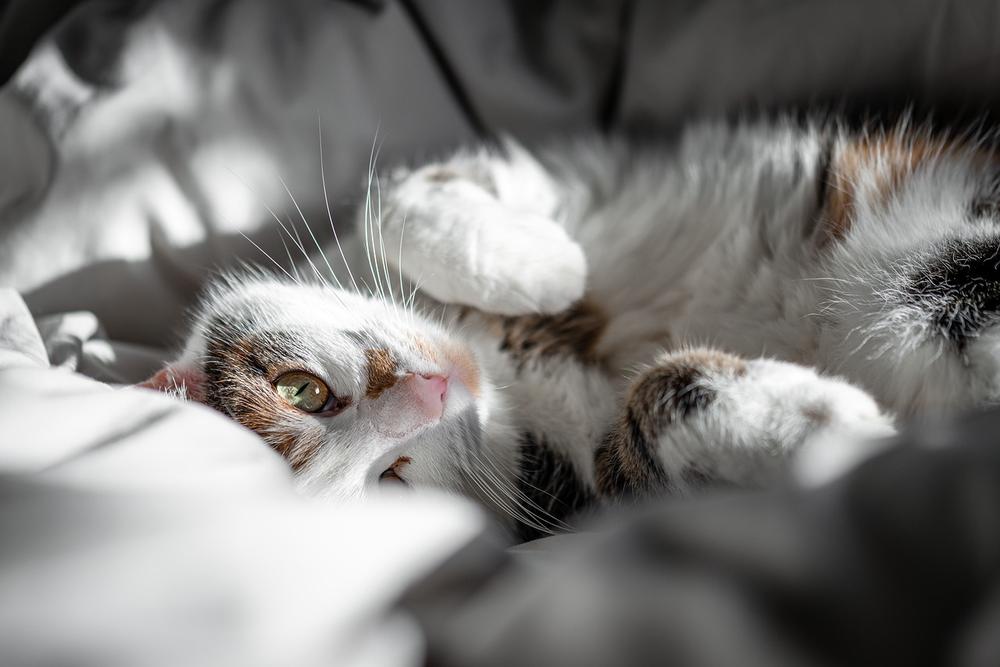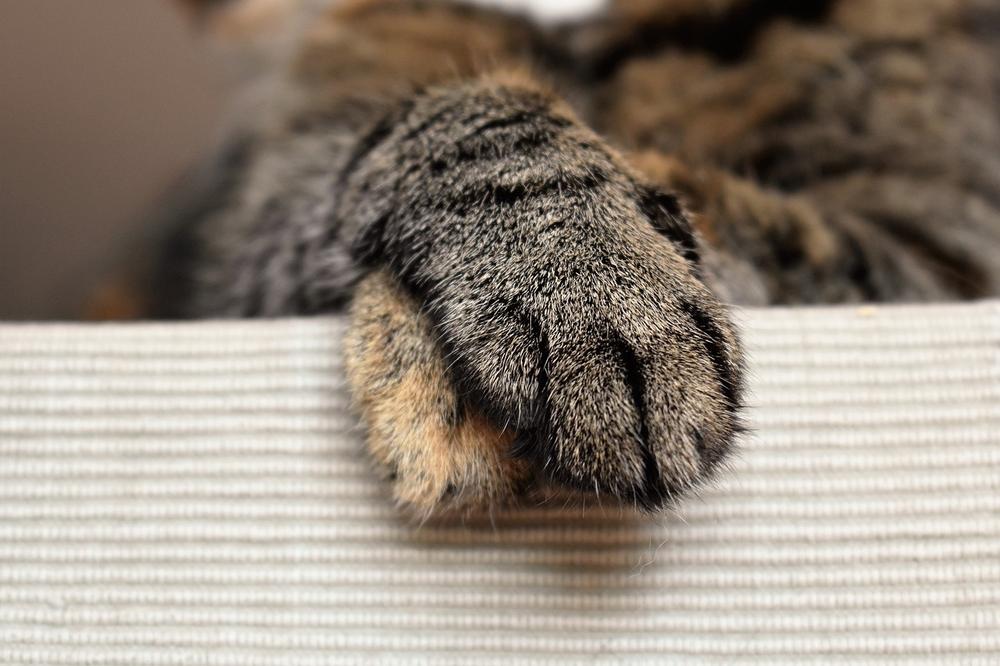How to Clean a Cats Paws After Using the Litter Box?

Got a cat with a dirty little secret?
Let me tell you, paws covered in litter ain't no walk in the park. 😕
They bring trouble, odor, and some serious health risks.
But fear not!
Today's guide is here to show you an easy and hygienic solution for your furry friend's paw predicament.
Ready?
Let's dive in!
How Do You Clean a Cat’s Paws After the Litterbox?
Use unscented baby wipes for gentle cleaning
When you clean your cat's paws after they use the litterbox, you need to be gentle and considerate.
Cats can be quite particular about their paws, so we need to take extra care.
First of all, you should never use scented wipes on their delicate skin.
Scented wipes might cause irritation to your furry friend. Instead, opt for unscented baby wipes for a gentle and safe cleaning experience.
Various methods to clean your cat's paws
Now let's talk about different ways you can clean those cute little paws.
It's easier than you think!
Start by using a moist towel or a baby wipe to soften any hardened litter that may have stuck to their paws.
Just gently wipe away any debris you find, and your kitten will feel much more comfortable.
If you notice any discoloration or feces on their paws, don't worry!
Simply use a damp rag with some mild soapy water to gently remove it.
This caring act will keep their paws clean and fresh.
In case there's debris stuck between their claws, you can carefully use a tweezer to remove it.

And if you want to get rid of fine materials and dust, try soaking a brush in warm, soapy water and giving their paws a good brush.
Finishing touches for clean paws
We're almost done ensuring the cleanliness of kitty's paws!
Now it's time for the finishing touches.
Take a moment to wipe your cat's claws with a damp towel soaked in some mild soapy water.
This quick step will leave their paws spotless.
Isn't that satisfying?
And don't worry if you come across any stubborn poop residue. There are simple solutions...
You can use unscented baby wipes, a slightly dampened towel, or a mixture of water and shampoo to soften it for easy removal. Remember, there are also special cat wipes available that are designed specifically to clean their paws.
So, grab a damp washcloth, a Q-tip, or even a cat bathing wipe, and let's get those adorable paws squeaky clean.
Believe me, your furry companion will show its gratitude in the most heartwarming way!
Main points I'll expand upon further down this article:
- Regularly touch and massage your cat's paws for cleanliness.
- Inspect your cat's paws to ensure they are dirt-free.
- Consider trimming your cat's claws if they are often dirty.
- Clean kitchen counters before preparing food, even with a cat.
- Wash counters, utensils, and cutting boards frequently to prevent contamination.
- Cats' paws can transmit infections like toxoplasmosis and cryptosporidiosis.
- Minimize litter tracking with larger litter boxes and litter mats.
- Regularly trim your cat's nails to reduce dirt accumulation.
- Trim foot hair on cats with long hair to prevent debris from sticking.
- Practice good hygiene and clean your cat's paws daily with a moist towel.
But did you know that cats instinctively groom themselves?
While they may not always effectively clean their paws after using the litterbox, you ought to ensure in essence hygiene.
So how can you assist in keeping their paws clean?
Keep reading to find out!
Do Cats Clean Poop Off Their Paws?
Are cats really tidy creatures?
Can they be trusted to clean up after themselves?
Let's find out, shall we?
- Cats spend hours grooming themselves every day, which helps them stay clean and get rid of dirt.
- But sometimes, these furry friends may not completely remove all signs of poop from their little paws while cleaning.
- That's why it's important for you to occasionally check your cat's paws and lend a hand in the cleaning process if necessary. Gotta keep that hygiene in check!
- A good way to make sure those paws are free from any nasty stuff is by touching and massaging them regularly. This will help take care of any dirt or debris that might have stuck around.
- And hey, if you notice that your cat's claws are often dirty, consider giving them a little trim. It can help prevent the buildup of filth and keep things neat and tidy.
- Even though cats groom themselves, it's tough to say if they always remember to clean their paws before hopping onto kitchen counters, for instance.
- So, better safe than sorry: wipe those counters down before you start preparing food, even if you have a lovely feline companion keeping you company.
- Cat poop can contain toxoplasmosis, a nasty thing that could cause flu-like symptoms and birth defects. To keep yourself safe, make sure to wash your countertops, utensils, and cutting boards on the reg. 😷
- While our purry pals usually do a pretty good job of keeping their paws clean, maintaining good hygiene practices is still essential. Don't forget about it!
- By being proactive and staying on top of those paw-cleaning sessions, you'll ensure your cat's well-being and create a healthy environment for everyone involved.
To get straight to the point: I've shared some helpful tips on cleaning your cat's paws, but there's more! Further down the blog post, you'll discover how to prevent litter from tracking everywhere with daily clean-up. Keep reading to find out!
And now that we know cats may not always clean their paws thoroughly after using the litter box, let's delve into why it is crucial for you to take proactive steps in keeping their paws clean and preventing potential health risks.
After all, your furry friend's well-being relies on proper hygiene practices, so let's explore how to maintain their in essence health by regularly cleaning their paws!
Are Cats Paws Dirty After Using the Litterbox?
You never want to think about it, but the truth is that cats' paws can get dirty after they use the litterbox. 😺

It's unpleasant, but there are some important things you need to know about this:
- To maintain their hygiene and prevent potential health risks, it's crucial that you clean your cat's paws regularly.
- Litter particles and feces can stick to their paws, making them look dirty and carrying disease-causing organisms.
- These dirty paws can actually transmit infections like cryptosporidiosis and toxoplasmosis.
- The infections can be contracted from their litterboxes or even the dirty floors they walk on.
- By cleaning their paws on a regular basis, you significantly reduce the chances of spreading these infections.
- You can use damp wipes or warm water with a mild soap to gently clean their paws.
- Don't forget to thoroughly dry their paws afterwards to avoid any moisture-related issues.
- Be extra attentive to cleaning their paws during rainy or snowy seasons when they're more likely to pick up dirt.
- Taking care of your cat's paws isn't just good for their health, it also creates a clean and safe living environment for both you and your furry companion.
So, keeping their paws clean means keeping them happy and healthy!
Minimizing Litter Tracking: Ensuring Comfort for Cat's Paws
To keep your cat's paws nice and cozy and to ensure litter doesn't end up all over the place, here are ten easy things you can do:
- Give those furry little paw pads a regular trim.
- Get a bigger litter box so there's less chance of litter being kicked out.
- Put some litter mats around the box to catch any litter that gets stuck to their paws.
- If necessary, use tweezers to clean your cat's claws.
- Keep their nails trimmed to stop dirt from building up.
- If your cat has long hair, give their foot fur a snip to prevent stuff from sticking to it.
- Be super careful with the paw pads, especially if your kitty has had declawing surgery.
- Think about using clumping kitten litters that won't bother their paws.
- Every day, wipe their paws down with a moist towel, paying extra attention to the spaces between their toes and pads.
- Try out litter boxes designed to minimize dirt tracking, like the ones that close up and have ridges to catch the litter.
Your cat's paws will stay clean and comfortable, leading to significantly reduced litter mess.

And finally, I want to address one more question that you may have: is it normal for a cat's nose to be cold? If you're curious about this topic, I highly recommend checking out my article, Why Is My Cats Nose Cold.
In it, I discuss everything you need to know about your cat's nose and whether or not it's a cause for concern.
So don't hesitate to dive into the fascinating world of feline nose thermoregulation and find out more about this interesting aspect of your furry friend's health and well-being.
Litter Mats or Carpets Can Help Reduce Tracking
Investing in a litter mat or carpet can make a big difference in reducing tracking.
Let me give you some tips to get the most out of your litter mat:
- Go for a high-quality litter mat with raised ridges: This design catches and traps litter particles as your cat exits the litterbox, preventing them from scattering all over your home.
- Remember to regularly shake out or vacuum the mat: Litter tends to build up on its surface over time. By shaking or vacuuming it often, you'll remove trapped litter and keep the mat working effectively.
- Think about using a mat with waterproof backing: Certain mats have a waterproof backing that stops any liquid accidents from seeping through and causing damage to your floors.
- Place the litter mat in front of or underneath the litterbox: Strategic positioning ensures your cat has to walk over it when leaving the litterbox, which increases the chances of catching any litter stuck to their paws.
- Choose a larger-sized mat: A bigger litter mat provides better coverage and catches more litter, reducing tracking even more.
You can greatly reduce the quantity of litter brought into your home by implementing these useful suggestions.

It'll be cleaner and more pleasant for both you and your furry friend.
And let me tell you, it's not just about keeping your floors clean!
There are important health considerations at play too...
Help Keep Litter From Tracking Everywhere With Daily Clean Up
Washing your hands before eating is crucial, especially for pregnant women.

It's as important as scooping the litter box daily to remove waste promptly. By doing so, you not only prevent unpleasant odor but also decrease the chances of litter being spread to different areas when your cat ventures around. Taking these simple steps guarantees a level of cleanliness and hygiene that is essential for you and your unborn child's well-being.
Remember, it's all about fostering a safe environment and ensuring the healthiest outcomes.
And that wraps up today's article.
You made it to the end of my blog post, so let me ask you something: Did you enjoy reading it? I put in a tremendous amount of effort to create informative and comprehensive posts. It truly takes up a significant chunk of my time (in a positive way), which is why it would mean the world to me if you could click on any of the social sharing icons to spread the word about this blog post. Many thanks!
Talk soon,
-Sarah Davis